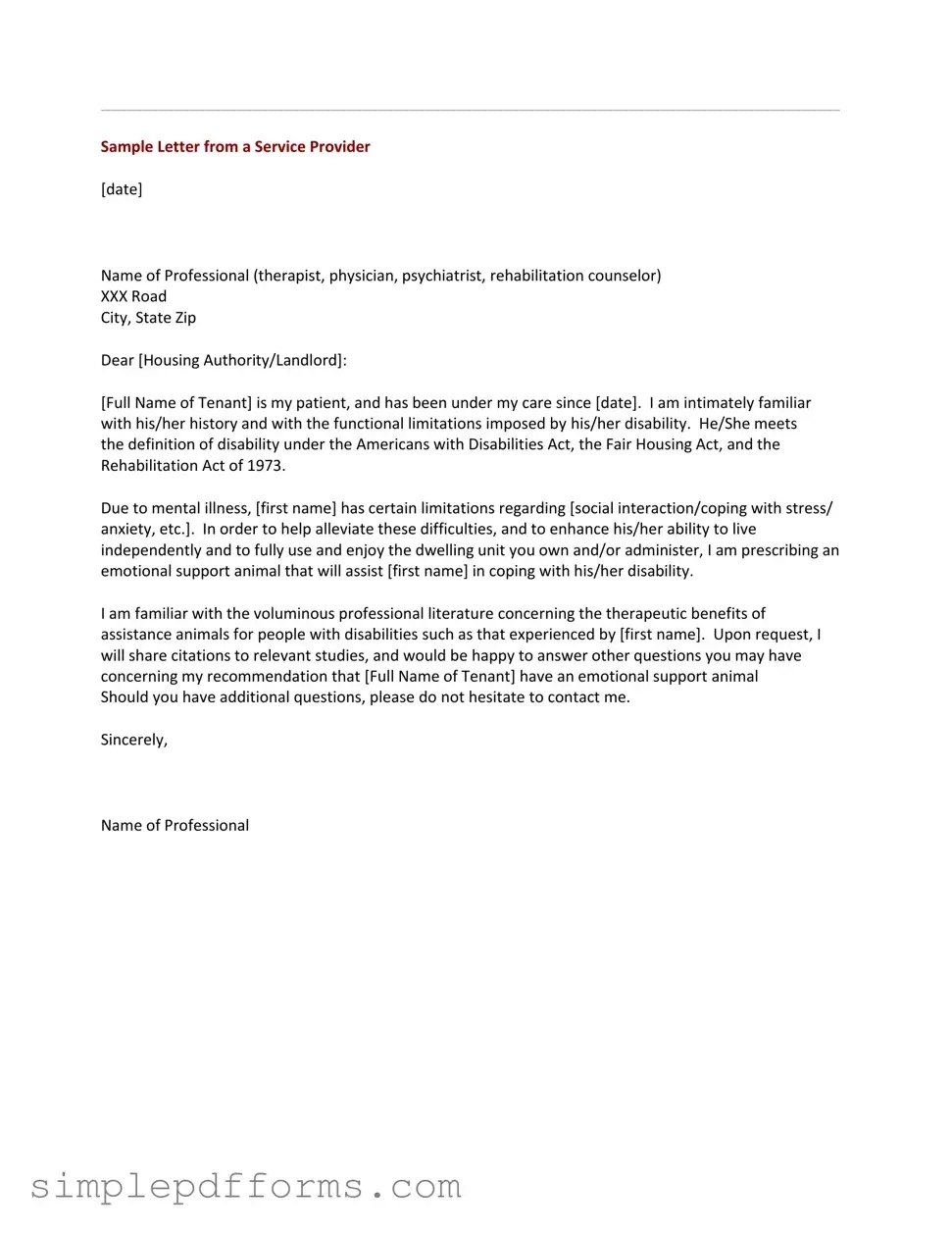Sample Letter from a Service Provider
[date]
Name of Professional (therapist, physician, psychiatrist, rehabilitation counselor)
XXXRoad
City, State Zip
Dear [Housing Authority/Landlord]:
[Full Name of Tenant] is my patient, and has been under my care since [date]. I am intimately familiar with his/her history and with the functional limitations imposed by his/her disability. He/She meets the definition of disability under the Americans with Disabilities Act, the Fair Housing Act, and the Rehabilitation Act of 1973.
Due to mental illness, [first name] has certain limitations regarding [social interaction/coping with stress/ anxiety, etc.]. In order to help alleviate these difficulties, and to enhance his/her ability to live independently and to fully use and enjoy the dwelling unit you own and/or administer, I am prescribing an emotional support animal that will assist [first name] in coping with his/her disability.
I am familiar with the voluminous professional literature concerning the therapeutic benefits of assistance animals for people with disabilities such as that experienced by [first name]. Upon request, I will share citations to relevant studies, and would be happy to answer other questions you may have concerning my recommendation that [Full Name of Tenant] have an emotional support animal Should you have additional questions, please do not hesitate to contact me.
Sincerely,
Name of Professional

